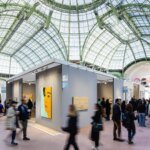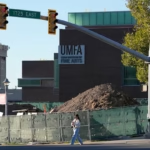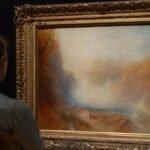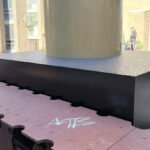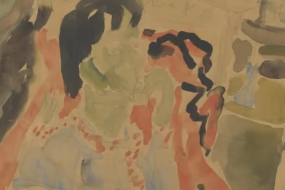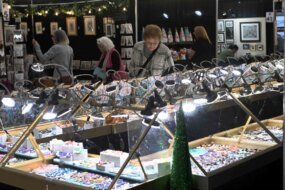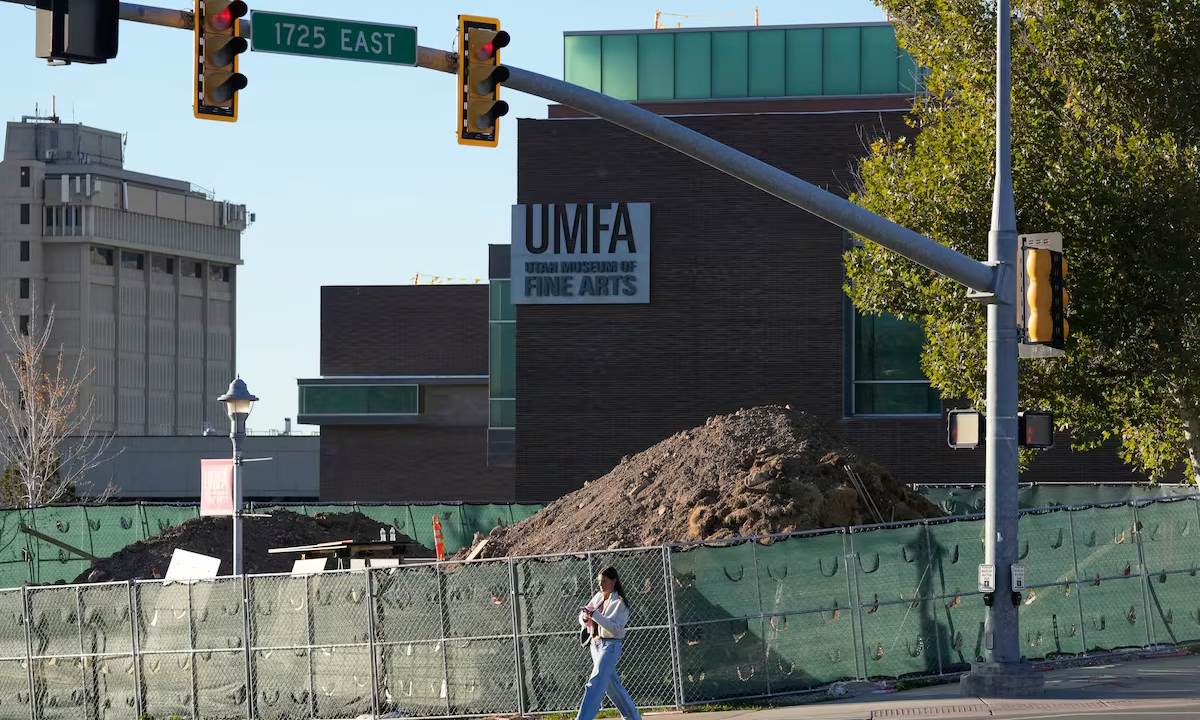
The University of Utah hopes you’re going to really like — maybe even LOVE — the iconic art sculpture it’s installing on campus.
The state’s flagship school has acquired one of the popular and widely recognized “LOVE” sculptures by mid-century artist Robert Indiana, which he designed in bright pop colors with signature slanted O’s.
Of course, the U. picked one that’s a splashy red on the outside, matching the university’s signature shade. There’s also blue paint inside the letters.
The towering 12-foot tall, 12-foot wide and 3-foot deep sculpture will be installed outside the Utah Museum of Fine Arts, or UMFA, that sits on the southeast end of campus near Rice-Eccles Stadium. And there are no small feelings about the HUGE piece.
“It’s a really great work of art,” said Gretchen Dietrich, the Marcia and John Price executive director of the UMFA. “It’s a work of art even non-art people know, and I love that about it.”
It also came with a big price tag: Purchasing the sculpture cost $4.5. million, with $2.5 million provided by donors. The remaining $2 million is covered by state public art funding. Because the U. is a public institution, it’s also insured by the state.
Those donors who chipped in pushed for the U. to get the piece in the first place, Dietrich said.
“A group of art-loving donors in our community really had their sights on it and wanted to bring it to Utah,” she said.
After crews finish constructing a platform to properly support its weight, the school plans to have the sculpture installed by early next year, when the museum also turns 25 years old. A love-filled unveiling is fittingly slated for Valentine’s Day.
U. President Taylor Randall visited New York City last fall to see the aluminum sculpture and make a bid. He, too, fell head over heels for it. It had long been placed at the intersection of 55th Street and Sixth Avenue, and was displayed for a month in 2023 outside Rockefeller Center before heading into storage.
(Marek Slusarczyk via the University of Utah) Pictured is a photo of the iconic “LOVE” statue in New York that the University of Utah will display on its campus starting early next year.
Now coming to the U., this edition of the “LOVE” sculpture was made in 1999 and is the fifth of five in its series.
It’s only the third time one has been up for auction. The last one sold in 2011 for $4.1 million, which was previously a record for the most expensive sale of one of the artist’s pieces.
Christie’s, the auction house that sold the piece, did not respond to a message from The Salt Lake Tribune about the sale.
While there are 86 iterations of the sculpture, just nine of them are the larger 12-by-12-foot size.
Indiana, who died in 2018, once said the “LOVE” works were “based on the original premise that the word is an appropriated and usable element of art.” He later said in 2014 that he felt it’d become “too popular.” At the smaller “LOVE” sculpture in Philadelphia, for instance, people stand in windingly long lines to take selfies by the letters.
Indiana had first designed the stacked word in a series of drawings in the 1960s made into cards. He then continued with the typographical subject in paintings and prints before making the first three-dimensional sculpture of it out of steel in 1970.
“He’d been thinking about this word and what this word means,” said Dietrich, who’s been the U.’s art museum director since 2009. For Indiana, she added, there was a spirituality to it that encompassed “the pain and truth of love in all its complexity.”
The image was quickly picked up by the 1970s peace and anti-Vietnam War movement. It catapulted into American culture more broadly when the design was placed on a U.S. postage stamp.
“There are a lot of ‘LOVE’ sculptures in the world,” Dietrich said. “It’s an editioned piece. Like a print or a photograph.”
The U. has some of Indiana’s paper prints inside, too, as part of its 22,000-piece art collection.
Brigham Young University in Provo also has a smaller “LOVE” sculpture. That had been on display purchased by the school in 1976 and displayed outside. But as student newspaper The Daily Universe reported, it was put into storage in 1998 after becoming weathered and too-loved by visitors, who climbed on and scratched it.
It was refurbished and put on display once again in 2005, this time inside the BYU Museum of Art, where it remains today.
Dietrich said Indiana’s works are featured in “every major museum in the country.”
‘A complex endeavor’ to place the work on campus
The U.’s sculpture will sit on the corner of South Campus Drive and Central Campus Drive, where visitors turn into the museum’s parking lot.
The spot was previously home to museum signage, Dietrich said, but many missed it and many more had a hard time finding the building. Now, she hopes, the entrance will stand out.
“I can start telling the people to turn at the ‘LOVE’ sculpture,” she said with a smile.
A fenced-in mound of dirt and orange cones currently sit where the sculpture will be installed. Last month, the museum posted a teaser on social media about the installation, saying, “Keep an eye out for something wonderful coming soon.”
Several commenters seemed in on the surprise, saying they think they’ll “LOVE” it and slyly comparing it to the red Block U that’s already on campus. Others, though, lamented the construction wasn’t paving the way for more parking.
The U. has run into some hiccups in placing the sculpture. Because of its weight — more than 1,000 pounds — it’s required setting a concrete base and rerouting utility lines.
Sprinklers also had to be moved so they didn’t hit the piece, which happened at BYU and contributed to the disrepair. Security cameras were added. And lights were put in to shine on it from above. (To prevent light pollution, the university requires that lights installed on campus all point down).
The placement is also on a bit of downward slope, so the school had to add retaining walls and supports.
The U.’s spokesperson said the school won’t have an estimate for the cost of that work until the project is done in February. It will also require new museum signage to replace what was removed for the sculpture.
Dietrich said it’s “always a complex endeavor” to site a big sculpture. The U. had hoped to unveil it in November, but the labor of love took longer than anticipated.
“We’ve got to get it right,” Dietrich added.
(Francisco Kjolseth | The Salt Lake Tribune) The Utah Museum of Fine Arts at the University of Utah prepares its grounds on Tuesday, Oct. 21, 2025 to place a “LOVE” sculpture by artist Robert Indiana.
(Francisco Kjolseth | The Salt Lake Tribune) The Utah Museum of Fine Arts at the University of Utah prepares its grounds on Tuesday, Oct. 21, 2025 to place a “LOVE” sculpture by artist Robert Indiana.
The piece has since arrived in Utah, so the school’s engineers could look at it in-person. Dietrich said she can’t say where it’s being stored for security reasons.
Once it’s installed, its care will include routine campus maintenance, like annual waxings, to keep it looking pristine.
The U. has two other sculptures outside currently, both on the north side of the museum. That includes a horse by Deborah Butterfield and a bronze figure piece by Paul Manship.
‘Art will truly save us’
Dietrich would like to see this latest “LOVE” addition open the door for the U. to bring in even more outdoor sculptures — and expand the museum.
Current, the UMFA — which is considered the state’s art museum and also serves as an art-collecting institution — is at capacity, she said. Her dream would be to expand the building to the south.
“I do hope that it will bring attention to the museum and the good work that we do in this community to make art accessible to our community,” she added.
The Legislature has pushed for Utah institutions to add more art. During the 2024 session, lawmakers passed SB144 to offer matching funds for cities and towns to create public art installations.
And there has been talk about supporting an art walk across Salt Lake City, which could include the “LOVE” sculpture at the U.
Dietrich said she wants the piece and those efforts to bring more people to the UMFA’s extensive collection and see all of the art on display, which she believes can be special to behold particularly during challenging times.
Just as love will find a way, she noted, “Art will truly save us.”
Note to readers • This story is available to Salt Lake Tribune subscribers only. Thank you for supporting local journalism.


